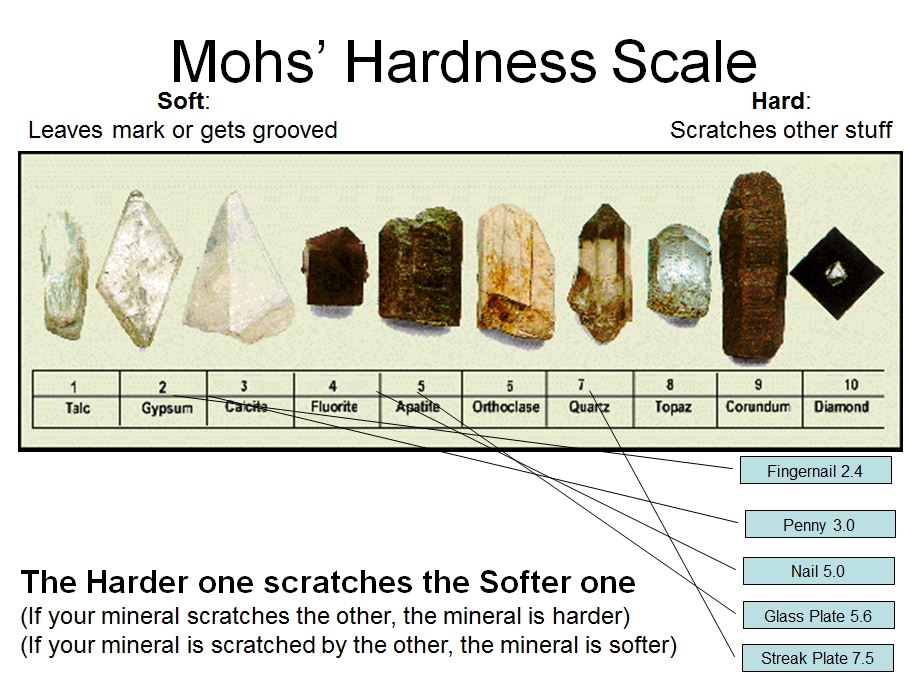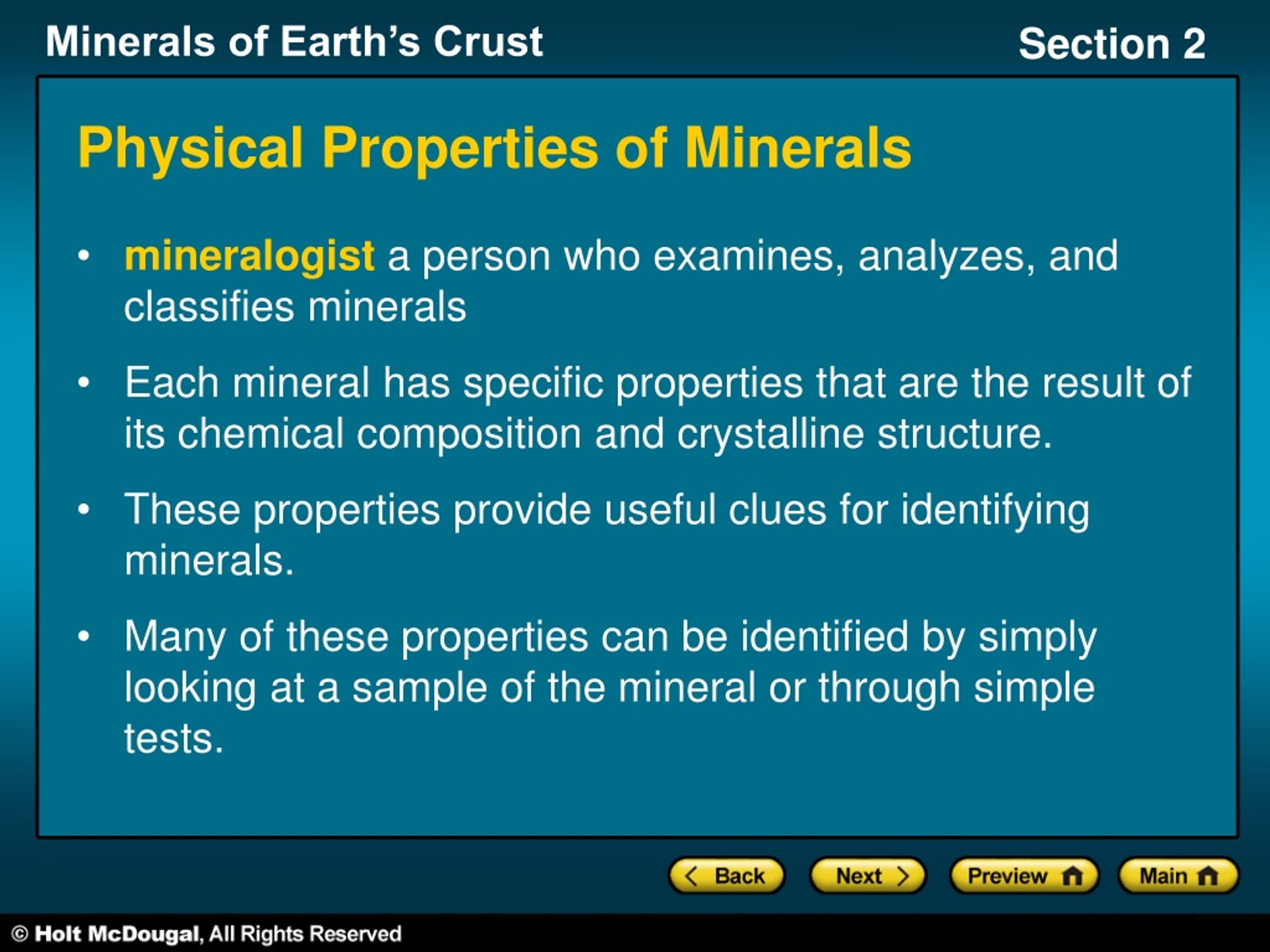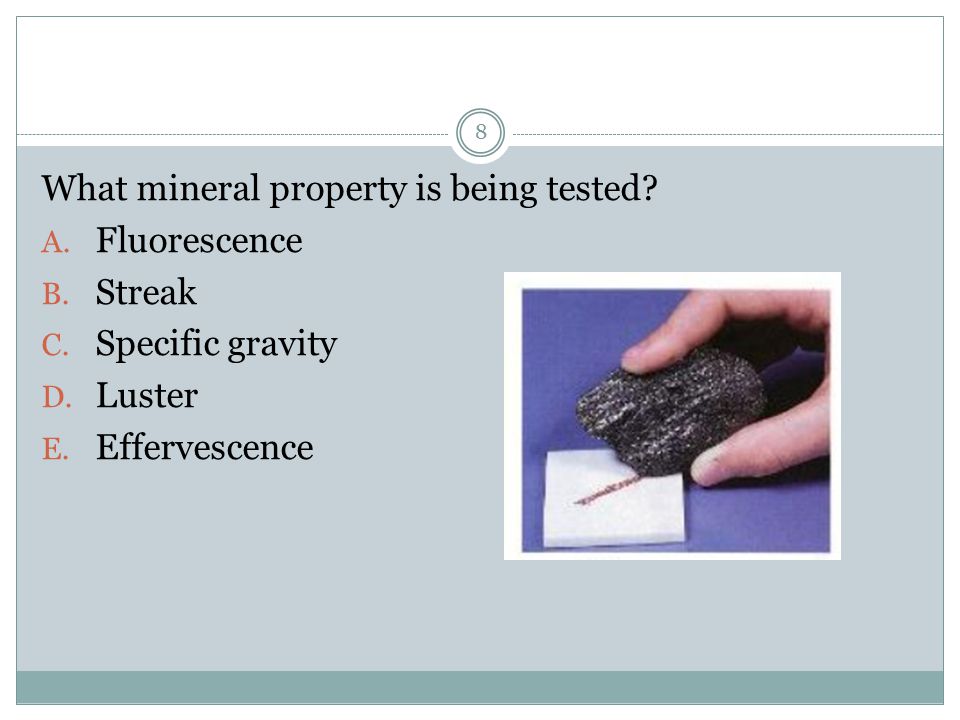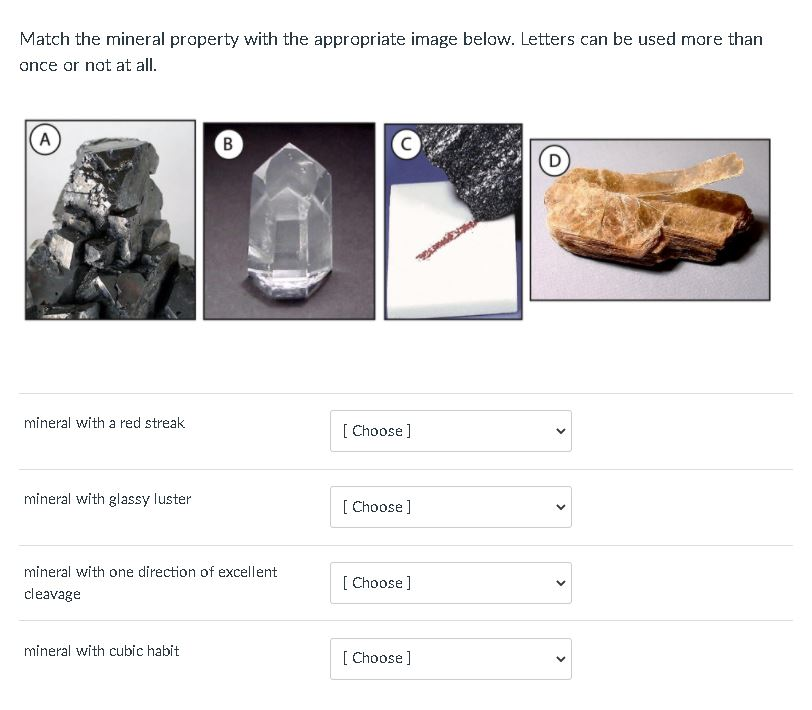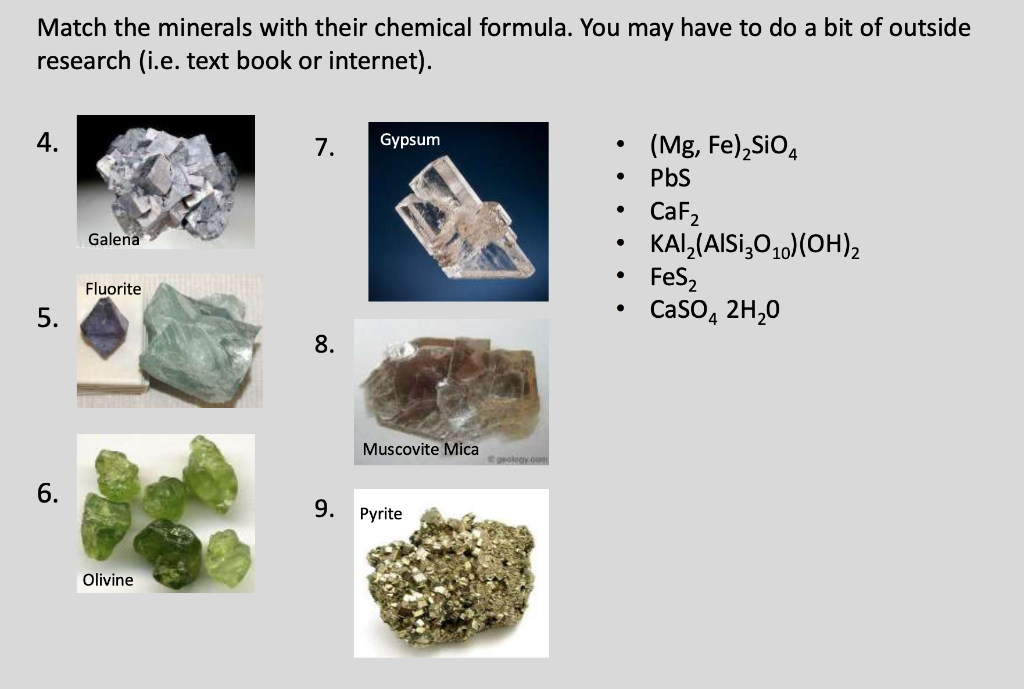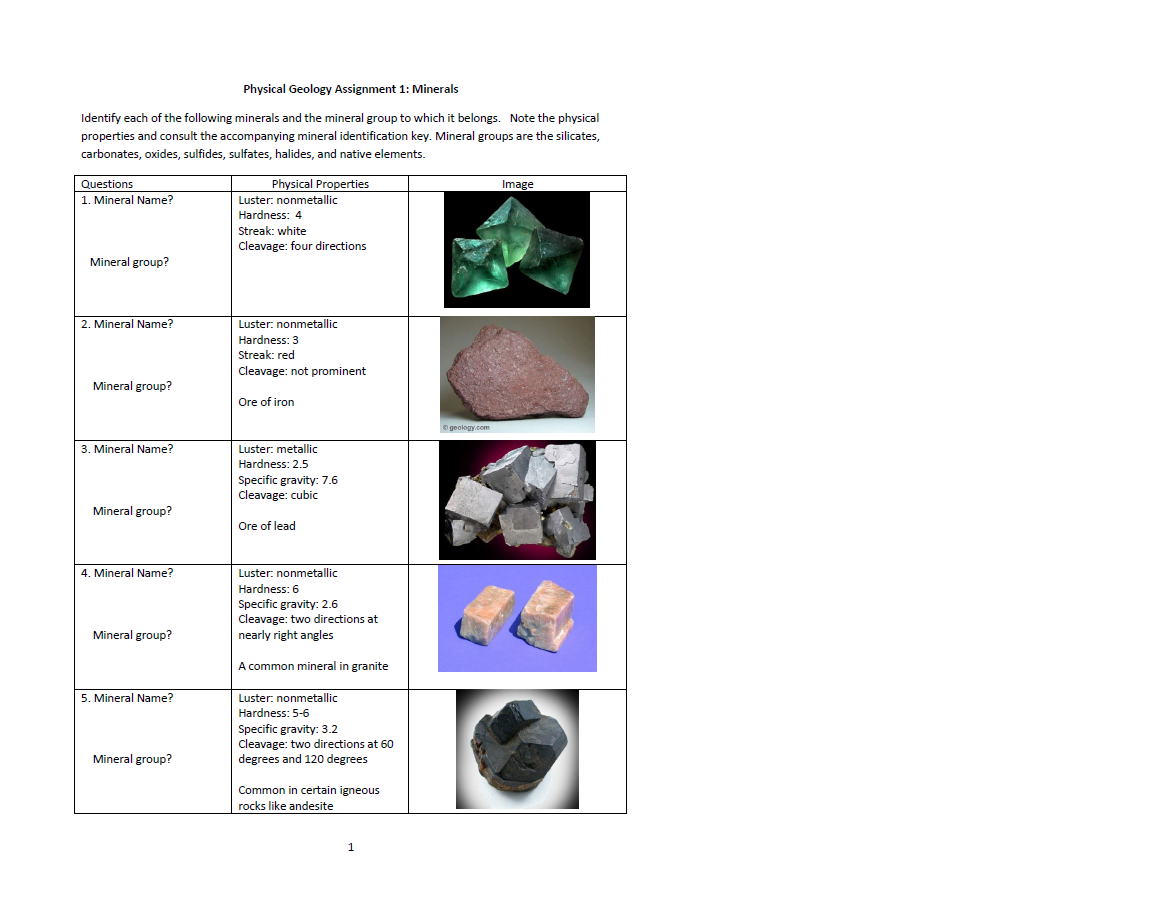Match The Mineral Property With How It Is Tested

Identifying minerals can seem like a daunting task, but geologists and enthusiasts alike rely on a series of straightforward tests to determine a mineral's unique properties. These properties, ranging from a mineral’s color to its resistance to scratching, act as a fingerprint, allowing for accurate identification.
This article explores the crucial relationship between mineral properties and the simple tests used to identify them, providing insights into the world of mineralogy.
Understanding Mineral Properties
Minerals, the building blocks of rocks, possess distinct physical and chemical characteristics that are consistent and measurable. These properties are crucial in the identification process.
Color and Streak
Color, while visually appealing, is often unreliable for mineral identification because impurities can significantly alter it. A more reliable property is the streak, the color of the mineral in powdered form.
The streak is determined by rubbing the mineral against a streak plate, a piece of unglazed porcelain. For example, hematite, which can appear black, red, or brown, always produces a reddish-brown streak.
Luster
Luster describes how a mineral reflects light. It is categorized as either metallic or non-metallic.
Metallic luster gives the mineral a shiny, metal-like appearance, similar to polished steel. Non-metallic lusters are further divided into categories like glassy (vitreous), pearly, silky, and earthy, each describing a unique reflective quality determined through simple observation.
Hardness
Hardness measures a mineral's resistance to scratching. The Mohs Hardness Scale, ranging from 1 (talc) to 10 (diamond), is used as a reference.
To test hardness, one attempts to scratch a mineral with materials of known hardness. For example, if a mineral is scratched by a fingernail (hardness 2.5) but not by a copper penny (hardness 3), its hardness lies between 2.5 and 3.
Cleavage and Fracture
Cleavage refers to the tendency of a mineral to break along smooth, flat planes of weakness in its crystal structure. Fracture, on the other hand, describes irregular breakage.
Cleavage is described by the number of planes and the angles at which they intersect. Observing how a mineral breaks helps identify these features.
Specific Gravity
Specific gravity is the ratio of a mineral's weight to the weight of an equal volume of water. It reflects the mineral's density.
Specific gravity is measured using a specialized process that involves weighing the mineral in air and then weighing it submerged in water. The ratio of these weights allows for calculation of the specific gravity.
Other Properties
Some minerals exhibit unique properties such as magnetism, fluorescence (glowing under ultraviolet light), or a distinctive odor. These are identified through observation.
For example, magnetite is easily identified by its strong magnetism. The mineral halite (rock salt) has a salty taste, readily identified by a simple taste test (used with caution and only when appropriate).
The Significance of Mineral Identification
Accurate mineral identification is essential in various fields, including geology, mining, and materials science. It helps geologists understand the formation and history of rocks and landscapes.
Mining operations rely on mineral identification to locate and extract valuable resources. Materials scientists use the properties of minerals to develop new materials and technologies.
Practical Applications
Understanding these tests empowers individuals to identify minerals they encounter in nature or collect as a hobby. Rockhounds, amateur geologists, and students can all benefit from learning these simple yet effective techniques.
By mastering these tests, anyone can unlock the secrets held within the Earth's diverse mineral kingdom.
"Mineral identification is the cornerstone of geological understanding," says Dr. Emily Carter, a professor of mineralogy at State University. "These tests, though simple, provide invaluable information about a mineral's composition and origin."
The ability to accurately identify minerals fosters a deeper appreciation for the natural world and highlights the importance of scientific observation.


